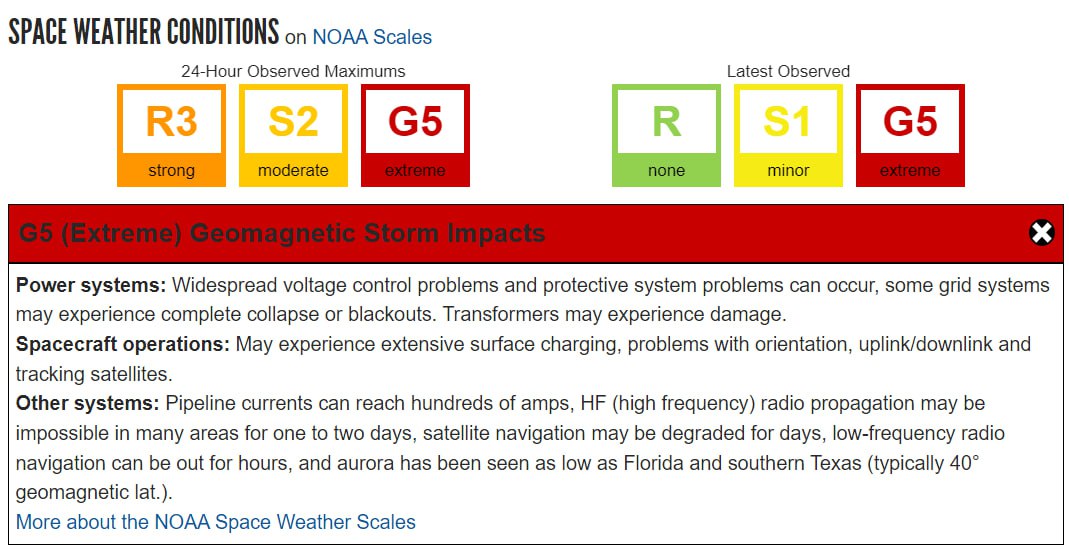A Geomagnetic storm has escalated to G5 level (“extreme”), marking the first instance in 21 years.
At 6:54 pm EDT, Earth experienced extreme (G5) conditions, anticipated to continue throughout the weekend due to multiple Earth-directed Coronal Mass Ejections (CMEs) currently en route.
HF/VHF/UHF communications, GPS, power grids, spacecraft, satellite navigation, and various other technologies may experience disruptions. Operators of critical infrastructure have been duly informed.
The last G5 event occurred during the Halloween Storms of October 2003, leading to power outages in Sweden and transformer damage in South Africa.
The primary source of this activity is a sizable, intricate sunspot cluster identified as NOAA Region 3664, measuring 17 times the diameter of Earth. Continued activity from this region is anticipated.

NOAA has officially confirmed an “extreme” G5 geomagnetic storm, marking the most significant solar event in two decades. The primary area of impact is expected to be poleward of 40 degrees Geomagnetic Latitude.
Induced Currents: There’s a likelihood of widespread voltage control issues and protective system malfunctions. Some power grid systems might face component failures or protective device trips, potentially leading to blackouts or service disruptions. Pipeline currents could surge to hundreds of amps.
Spacecraft: Systems onboard spacecraft may encounter anomalies such as extensive surface charging, unexpected changes in orientation and attitude, errors in uplink/downlink communications, and degradation in satellite orbit stability.
Navigation: Satellite navigation, notably GPS, may suffer from degradation or even become unavailable for several days, affecting various navigation systems reliant on satellite signals.
Radio: High-frequency (HF) radio propagation might become challenging or impossible across many areas for a duration of one to two days, impacting communication systems reliant on HF frequencies.
Aurora: Aurora activity may extend as far south as Florida, southern Texas, and southern California, offering potential viewing opportunities in these regions typically unaffected by such phenomena.
Bringing you the latest updates on finance, economies, stocks, bonds, and more. Stay informed with timely insights.
















Be First to Comment